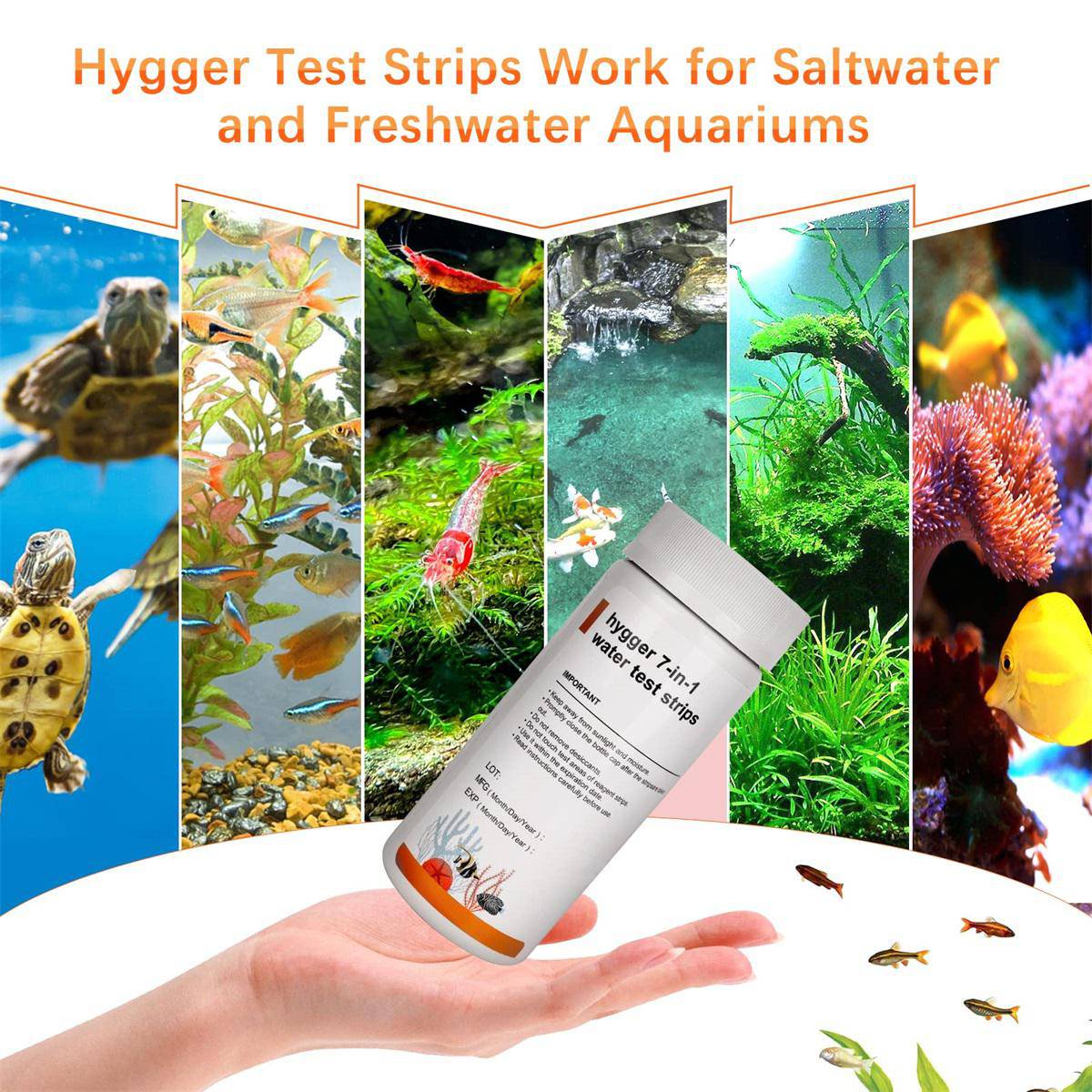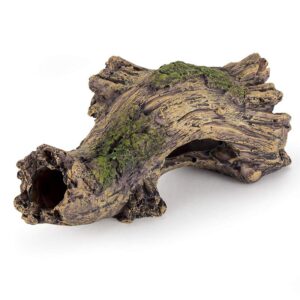What Do Freshwater Aquarium Shrimp Eat
Freshwater shrimp can be found in areas with warm water in the Southern US, Mexico, and Central and South America. They come in diverse and vibrant colors. Without wasting much time, let’s dive deep into what shrimp eat in the freshwater aquariums and the care guides.
Shrimp tank
Freshwater shrimp can be kept in most tropical freshwater fish aquariums, like tetras, and tiger barbs. However, setting up a shrimp tank can be different from setting up a fish tank. Then, how to set up a shrimp tank, and how to care for shrimp in aquariums?
How to set up a shrimp tank
The basic steps include adding substrate, adding aquarium decorations, filling the aquarium with water, cycling your tank, and introducing shrimp. Next, let’s learn more about the shrimp tank setup.
Tank size
You should prepare a tank first. Although most shrimp are small, the minimum tank size can be about 2 – 5 gallons. However, in general, the larger, the better if you keep an amount of shrimp.
Aquarium substrate
Fine gravel, sand, and aquarium soil are excellent alternatives. However, it is better to rinse the substrate before adding it to aquariums. Otherwise, your aquarium water will be cloudy for a few days. Generally, just keep the substrate for about 1–3 inches in height. Because too deep a substrate would lead to a build-up of anaerobic gas, which is not good for shrimp tanks.
Aquarium decorations
Shrimp need hiding places. You can create hiding space with aquarium decorations, like wood, caves, rocks, ornament tree trunk, or others. Plus, microorganisms will grow on the surface of these aquarium objects. And it can be another food source for shrimp.
Aquatic plants
Aquatic plants provide more hiding places for shrimp. The available aquatic plants can be Anubias, Java moss, Java fern, and moss balls. Plus, adding some aquatic plants can improve the ornamental value of shrimp tanks.

How to care for freshwater shrimp in aquariums
Regular water changes
It is vital to change the water once every two weeks. During the water change process, you can also clean the substrate with an electric vacuum cleaner. Then, the aquarium water quality in the shrimp tank would not get poor.
Monitor water parameters
Frequent water parameter fluctuation would cause shrimp death. It is better to test the water parameters regularly, like TDS, water temperature, ammonia level, nitrite level, nitrate level, pH level, etc. TDS measures the total dissolved solids in aquarium water. Too much TDS would pose threats to shrimps’ health. Take ghost shrimp as an example, the ideal TDS ranges from 150 to 200.
Necessary aquarium equipment
- Aquarium light
Seeing that there are aquatic plants in freshwater shrimp aquariums, adding an aquarium light may be needed. Any planted aquarium LED lights can be optimal options. Just choose one according to the tank size and plants’ needs.
- Aquarium heater
Whether you should add an aquarium heater depends on the shrimp’ needs. Commonly, it is better to keep the water temp between 70℉-79℉. Hence, in some areas, it may be necessary to add an aquarium heater to keep a stable and warm water temperature.
- Aquarium filter
The sponge filter is perfect for shrimp tanks. Because it is effective and easy to install. Furthermore, you should make sure that the filter in shrimp tanks will not suck away the small shrimp. Additionally, you need to clean the sponge once a month.
What do shrimp eat
Favorite foods of aquarium shrimp
Freshwater shrimp are omnivores. They can eat various foods. For instance, algae, dead shrimp, uneaten fish food, live or rotten aquatic plants, decaying substances, or others.
To conclude, the following are some favorite and suitable diets for shrimp.
- Aquatic plants
- Leaves (e.g. Indian almond leaves)
- Vegetables (e.g. Cucumber, Zucchini, Spinach)
- Alage
- Biofilm
- Cuttlebone
- Bloodworms
- Brine shrimp
- Daphnia
- Pellets
Food requirements for different freshwater shrimp
1. Ghost shrimp
What do ghost shrimp eat? Ghost shrimp are great scavengers. The leftovers on the bottom of the fish tank can be a food source for them. Also, algae, aquatic plants, larvae, and pellets are available foods. Ghost shrimp are omnivorous. Hence, you can feed them a variety of foods.
2. Brine shrimp
Brine shrimp is a great food for many aquarium fish, but what do brine shrimp eat? Brine shrimp eat anything they can swallow. Algae, like diatoms and cyanobacteria, are accepted. Furthermore, you can also feed brine shrimp egg yolks, yeast, soybean powder, and wheat flour.
3. Red cherry shrimp
The available diet for cherry shrimp consists of algae in the aquarium and leftover dried food from other fish in your tank. This makes them a great secondary food feeder for your fish.
4. Crystal red shrimp
Crystal red shrimp are omnivores and eat anything that comes near them. In aquariums, they would like to eat algae. You have to supply enough food frequently in case of a clean environment.
5. Grass shrimp
Grass shrimp are fond of eating leftovers and love eating dead and decaying plants. In addition to this, algae, larvae, pellets, or others can also be excellent food. Exactly, they are great aquarium cleaners.
How to feed shrimp
Commonly, you should feed shrimp once every two or three days. Also, foods rich in protein should be fed once each week. Moreover, do not forget to supplement minerals and calcium. Plus, you should ensure shrimp would finish eating within 2–3 hours. Keep in mind, do not overfeed, and remove the uneaten food in time.
Next, we will give you an example of how to feed cherry shrimp. A diverse food will be perfect for cherry shrimp. Algae wafers, carrots, snails, crabs, or others are feasible to feed. However, they may need to be fed every day.
Facts about aquarium shrimp
Freshwater aquarium shrimp can be held in aquariums alone, or introduced to community fish tanks. In this part, we will share some facts about freshwater aquarium shrimp.
- Aquarium shrimp are not picky eaters. They eat almost everything. So, as for the cost of food, they are lower cost.
- Some shrimp are nocturnal. They will hide in aquariums, while they will be active and eat at night. For example, the peppermint shrimp, Amano shrimp, and Ghost shrimp are all nocturnal.
- Introducing shrimp is beneficial to keep fish tanks clean. Aside from removing algae, some shrimp also makes sense to clean aquarium glass by stripping algae from the aquarium walls.
- Shrimp are easy to breed. Because they can carry the eggs underneath the body.
- The freshwater shrimp can molt. You may be surprised about it. They often molt at young ages. It is common for shrimp to melt once a week.
- Shrimp are great swimmers, and they usually walk around aquariums.




